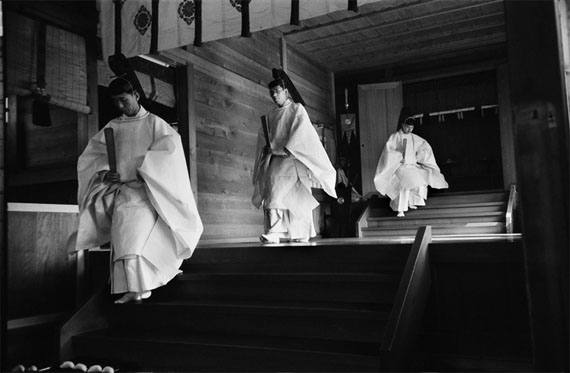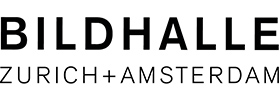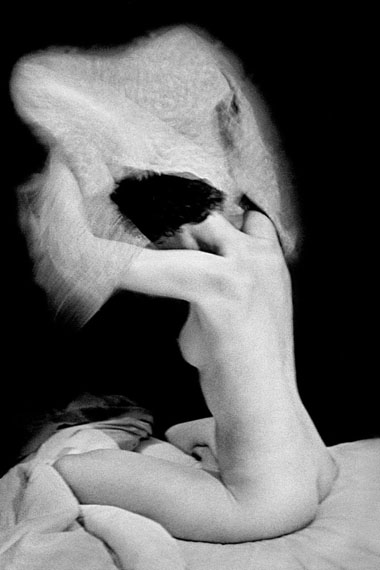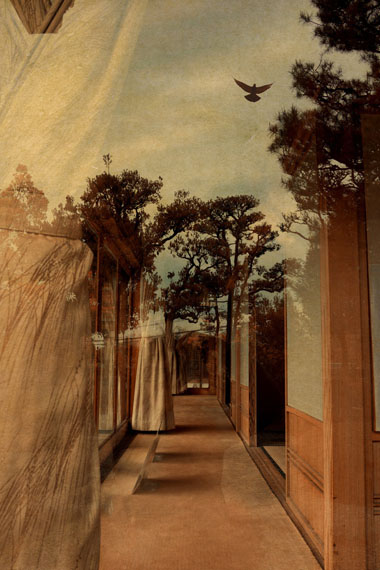
Shinto Priests, Meiji Shrein, Tokyo, Japan, 1951
Platinum-Palladium-Print, 56 x 76 cm, Edition of 5 & 2 AP
signed and stamped by Estate © Werner Bischof/Magnum Photos
Haute Photographie 2019 Rotterdam
Albarrán Cabrera » Werner Bischof » René Groebli » Thomas Hoepker » & others
Fair: 7 Feb – 10 Feb 2019
Wed 6 Feb 18:00
LP2 in Las Palmas
Wilhelminakade 326
3072 AR Rotterdam

BILDHALLE
Stauffacherquai 56
8004 Zürich
+41 (0)44-5520918
info@bildhalle.ch
www.bildhalle.ch
Tue-Fri 12-18:30, Sat 11-16

THE EYE OF LOVE, SITTING NUDE NO.521, Paris, 1952
Silver Gelatine Print 40 x 50 cm
Framed with glass 50 x 60 cm, Edition of 7
Werner Bischof was born in Switzerland 1916. He studied photography with Hans Finsler in his native Zurich at the School for Arts and Crafts, then opened a photography and advertising studio. In 1942 he became a freelancer for Du magazine, which published his first major photo essays in 1943. Bischof received international recognition after the publication of his 1945 reportage on the devastation caused by the Second World War. In the years that followed, Bischof traveled in Italy and Greece for Swiss Relief, an organization dedicated to post-war reconstruction. In 1948 he photographed the Winter Olympics in St Moritz for Life magazine. After trips to Eastern Europe, Finland, Sweden and Denmark, he worked for Picture Post, The Observer, Illustrated and Epoca. He was the first photographer to join Magnum with the founding members in 1949.

MOUTH OF KRISHNA NO 60766, 2018
Pigments on Gampi Paper and gold leaf, 40 x 50 cm
Framed with museum glass 50 x 60 cmm Edition of 10
The artistic duo Angel Albarrán and Anna Cabrera (both born 1969, based in Barcelona) have spent a lot of time in Japan, and their travels to the country have strongly influenced the aesthetic content of their work and the printing techniques they use. The question running like a thread throughout their work is how images trigger individual memories in the viewer. Depending on their social and cultural backgrounds and on their personal experience, viewers perceive images in completely different ways. Albarrán Cabrera see their photographs as objects in their own right: they handcraft their prints using classic printing methods, such as platinum and silver halide, or invent new ones, such as pigment prints on gold leaves, create copies that are unique in themselves. The poetic and sensual nature of these prints is proof of an unrivalled craftsmanship.
Swiss-born photographer René Groebli has a body of work that spans over 60 years. He started out as a photo reporter in the 1940s, working for magazine Die Woche and going on assignments to Africa and the Middle East for London agence Black Star. In the mid-fifties he founded his own studio for advertising and industrial photography. Here he specialised in colour photography and he experimented with the dye transfer process. Then, in the 1980s, he returned to creating artistic essays in black and white. He continues his personal work until the present day.
Thomas Hoepker studied art history and archeology, then worked as a photograper for Münchner Illustrierte and Kristall between 1960 and 1963, reporting from all over the world. He joined Stern magazine as a photo-reporter in 1964. Magnum began to distribute Hoepker’s archive photographs in 1964. He worked as a cameraman and producer of documentary films for German television in 1972, and from 1974 collaborated with his wife, the journalist Eva Windmoeller, first in East Germany and then in New York, where they moved to work as correspondents for Stern in 1976. From 1978 to 1981 Hoepker was director of photography for the American edition of Geo. Hoepker worked as art director for Stern in Hamburg between 1987 and 1989, when he became a full member of Magnum. �